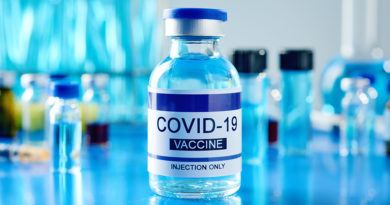Chemical used to sterilise Covid-19 tests won’t turn into deadly antifreeze

30 September 2021
What was claimed
Ethylene oxide, used to sterilise lateral flow tests, is deadly and turns into antifreeze upon use.
Our verdict
While large amounts of ethylene oxide can be dangerous, the amount used to sterilise tests is tiny and assessed against strict safety standards. No ethylene oxide is left once tests are packaged.
What was claimed
NHS Test and Trace changed its packaging between December 2020 and February 2021 to hide the presence of ethylene oxide.
Our verdict
While the packaging did change this was done to clarify that only testing swabs were sterilised with ethylene oxide. This is still clearly stated on other packaging included with the tests.
What was claimed
Ethylene oxide is the main ingredient used in antifreeze.
Our verdict
This is not true. It is used as an intermediate agent to produce other chemicals.
A video posted on Facebook suggests that ethylene oxide, a gas used to sterilise lateral flow swabs, will react upon contact with moisture and create deadly antifreeze and that ethylene oxide can immediately cause cancer. The video also claims that the packaging of lateral flow tests from the NHS has been deliberately changed to remove reference to ethylene oxide.
As we have written before, ethylene oxide is a colourless gas which is used to sterilise medical equipment around the world and, although overexposure can be dangerous, its use does not make medical products like lateral flow tests unsafe.
Although the packaging for lateral flow tests has changed, the test kits still make clear that ethylene oxide is used to sterilise the swabs.
Is ethylene oxide safe?
Ethylene oxide has been used as a sterilising agent for decades, and is used to sterilise lateral flow tests. Sterilisation of medical devices is very important to ensure infections do not spread.
A minimal amount of ethylene oxide is used for sterilisation of lateral flow swabs, just 1-2μg (millionths of a gram) per gram.
The Medicines and Healthcare products Regulatory Agency (MHRA), which regulates drugs in the UK, previously told Full Fact that ethylene oxide is a highly controlled and safe method of sterilisation which is evaluated throughout the sterilisation process to ensure it meets safety standards.
The sterilisation process involves exposing a material to ethylene oxide for a few seconds or minutes before the gas is removed, with no ethylene oxide left before the material is packaged.
The MHRA states: “In the highly unlikely event that a swab does contain a residual amount above the allowable limit, the risk to the user is still considered to be very low.”
Professor Andrea Sella, professor of inorganic chemistry at University College London, previously told us that “there is no conceivable harm that can come from using an item sterilized in this way”.
Chronic exposure to ethylene oxide can be dangerous. Public Health England guidance states inhalation can cause “irritation to eyes, nose and respiratory tract, causing coughing, burning” and in severe cases may also result in “coma, cardiovascular collapse and respiratory arrest”.
According to the US National Cancer Institute, lymphoma and leukemia are most frequently reported cancers associated with occupational exposure to ethylene oxide. Stomach and breast cancers have also been reported.
In the UK, there are exposure limits set by the Health and Safety Executive to protect workers who may interact with the chemical.
Why did the packaging change?
The Department of Health and Social Care confirmed to Full Fact that while the “Sterile-EO” icon was initially on the outside of the kit box, this suggested all testing kit components (not just the swabs) were sterilised with ethylene oxide, which was not the case.
For this reason, the icon was subsequently removed from the outside of the box and only kept on the outer packaging of swabs and among a glossary of symbols in the instructions for use.
And is ethylene oxide the main ingredient in antifreeze?
Ethylene oxide as a gas isn’t used in antifreeze (a liquid that stops the water in an engine cooling system from freezing) but is used as an intermediate to create other chemicals found in antifreeze, as well as other consumer products such as polyester and coolant.
For example, ethylene glycol (one of the base products used in antifreeze) is produced through a chemical reaction using ethylene oxide. Although there are a number of methods for the production of ethylene glycol, among the most common methods are combining ethylene oxide with water at very high temperatures and pressures or through combination with carbon dioxide.
In short, the ethylene oxide used to sterilise your swab will not harm you. There is unlikely to be any ethylene oxide left on your swab when you use it and even if a very small amount did remain, the moisture from your nose or throat would not combine with it to create antifreeze.
We have checked a number of other misleading claims about the use of ethylene oxide in lateral flow tests.
This article is part of our work fact checking potentially false pictures, videos and stories on Facebook. You can read more about this—and find out how to report Facebook content—here. For the purposes of that scheme, we’ve rated this claim as partly false because the use of ethylene oxide is controlled within strict safety limits. It does not turn into antifreeze when test swabs are exposed to moisture and it is not the main ingredient in antifreeze. While the packaging for lateral flow tests did change, this was because only the swabs in the package are sterilised in this way.


